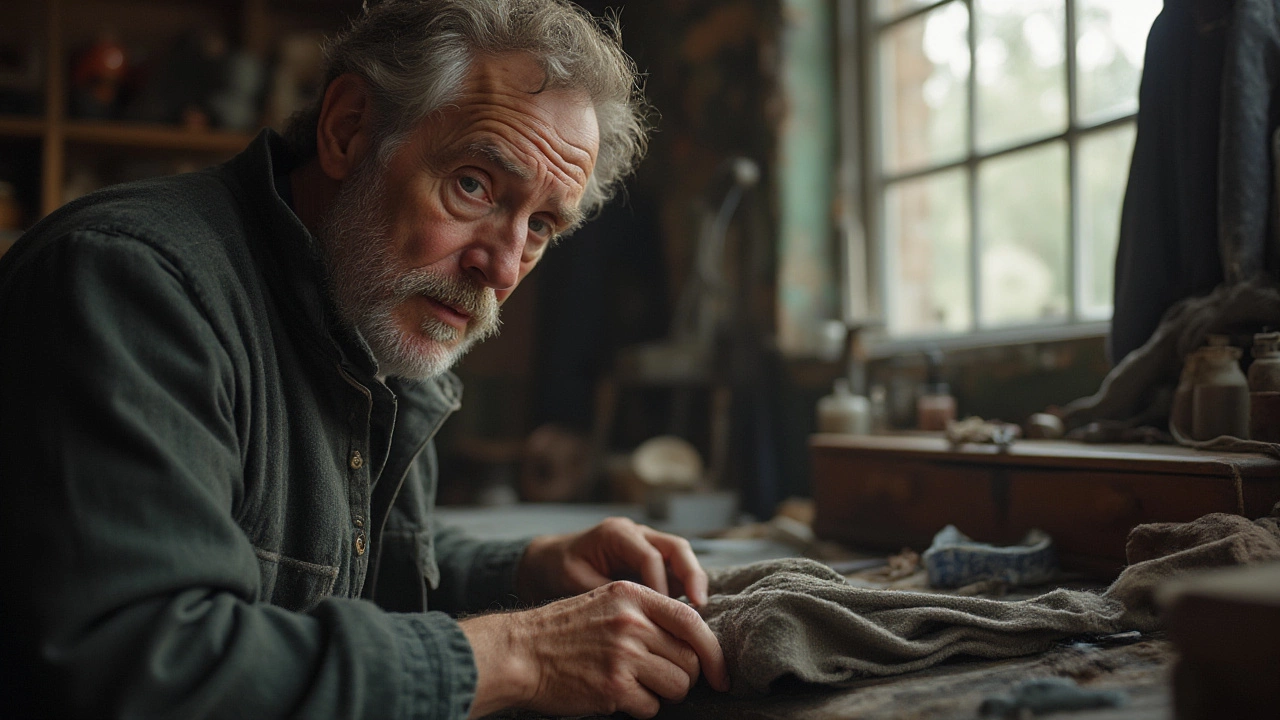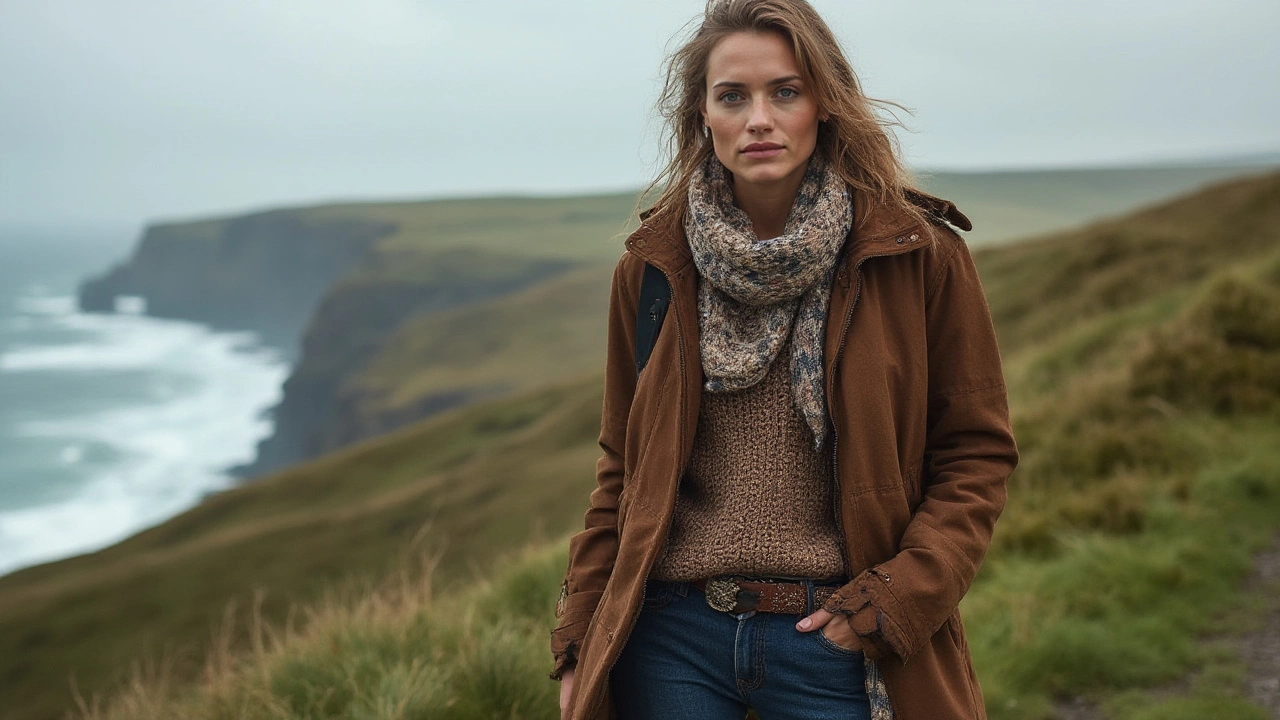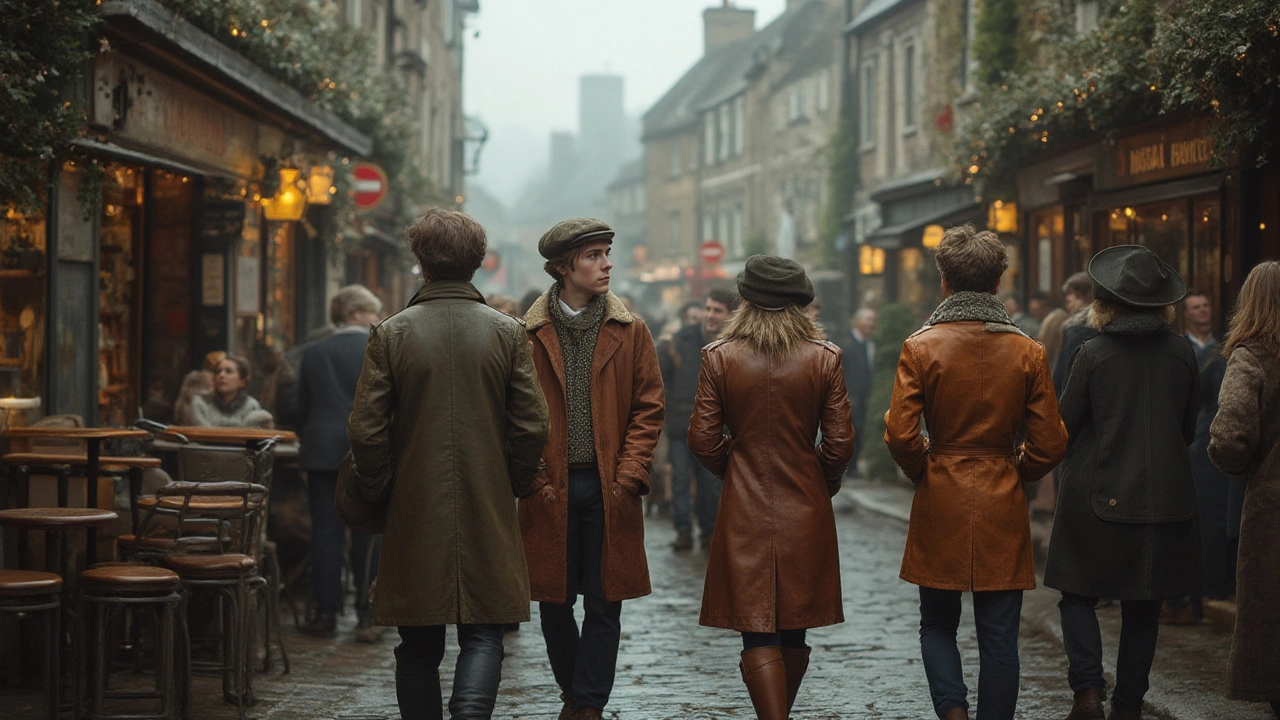Pop into a charity shop on George’s Street in Dublin, or take a stroll down Galway’s Latin Quarter during a misty weekend, and you might just spot an odd piece hanging among the tweed caps and Aran jumpers—a jerkin jacket. In Ireland, where fashion’s always blended the practical with the poetic, the jerkin isn’t just old-school clobber for history buffs or drama students. This vintage overgarment has roots running deeper than most realize, weaving its way through battles, ballrooms, and even the odd festival field at Electric Picnic. The jerkin’s rugged, boxy cut has more Irish street cred than you’d think—you just need to know what you’re looking at.
The Story of the Jerkin: More Than Just a Waistcoat
So, what actually is a jerkin jacket? If you ask my dad, he’ll tell you it’s something you’d see on a pumpkin-headed scarecrow in an Enid Blyton book. But historians and style watchers in Ireland know better. The jerkin is a sleeveless outer garment, often snug and cut from thick, rugged materials like leather or wool. While the word sounds almost mischievous, it’s got a serious past.
Back in the 16th and 17th centuries, jerkins were everywhere across Europe—including here on the island. They were practical, made to wear over doublets for a bit of wind and weather protection but without the arm encumbrance. These jackets first showed up mostly among soldiers—hence that tough look. By the time Cromwell’s men tramped through Ireland, jerkins were standard army kit. You’ll see them cropping up in portraits at the National Gallery of Ireland—even among Irish chieftains who needed durability whether in the heat of battle or brooding in a stone tower.
Fast forward a couple of centuries, and the jerkin was repurposed during both World Wars. The British Army issued leather jerkins to troops—including plenty of Irish lads—serving in trenches where warmth and mobility were a literal matter of life and death. Leather jerkins were iconic: they had brown sheep’s wool lining, four wooden buttons, and smelled gloriously musky after a rainy day on manoeuvres. There’s even a display at the National Museum of Ireland in Collins Barracks showcasing military jerkins alongside trench art and field gear.
The jerkin’s cut—similar to a waistcoat but boxier and sturdier—found its way off the battlefield and into daily Irish life by the 20th century. And if you’ve ever been to a village festival like the Ardara Cup of Tea Weekend, you might've seen local musicians sporting jerkins over shirts to keep the Donegal wind at bay. Immigration also spread the style; Irish-Americans in Boston wore jerkins modified with plaid wool for that echo of home.
It’s interesting to note the slow burn resurgence of vintage style among Dublin’s creative crowd. At Temple Bar’s weekly flea markets, it’s tough to miss those hand-stitched jerkin jackets, sometimes diesel-scarred, sometimes patchworked from old GAA jerseys, always carrying stories. Schools like the Grafton Academy have even run workshops on making modern jerkins from Irish tweed offcuts. Boutique designers from Kilkenny to Dingle now experiment with vegan leather and felted wool to recast the jerkin for eco-conscious urbanites. The result? Practical, distinctly Irish heritage style making a big comeback in the wardrobes of both teenagers and their granddads.
If you want names, the Irish brand Magee 1866 is worth checking for high-end takes, while shops like Retro in Temple Bar or Siopaella stock upcycled versions for the thrift-hunting crowd. Some local costume designers even rent authentic World War II jerkins for period theatre and film. The Jerkin is more than just fashion nostalgia—it’s a badge of rugged solidarity that feels right at home in the Irish climate.
| Jerkin Fact | Irish Context |
|---|---|
| First appeared | Seen in Ireland by the 16th century, used by both civilians and soldiers |
| Common Materials | Leather, wool, tweed—locally sourced O’Mahony leathers or Donegal tweeds often used today |
| Historic Uses | Military uniforms, farmers’ overgarments, traditional musicians’ outerwear |
| Modern Revival | Upcycled vintage jackets, bespoke tailoring, eco-friendly fabrics |
| Where to buy in Ireland | Temple Bar markets, Siopaella, Grafton Academy workshops, Kilkenny boutiques |

How to Wear a Jerkin Jacket in Today’s Ireland
There’s something quietly confident about throwing a jerkin jacket over your shoulders. It’s got warmth (no small thing when the east wind’s howling up the Liffey in December), a splash of nostalgia, and a rare adaptability that makes it work whether you’re tailgating at a rugby match in Landsdowne or out with friends at the Cobblestone for tunes. The key? Knowing how to style it for the Irish palette and climate without looking like you’re headed for a panto audition.
Let’s get practical. In the depths of a damp Irish winter, classic leather jerkins with sheep’s wool linings are unbeatable—think of them as an alternative to big puffa jackets that can sometimes feel cumbersome on jammed Dublin buses. If you’re cycling down the canal or nipping up to Phoenix Park with Aisling or Ciaran, you want freedom of movement, a solid windbreak, but also something that doesn’t look out of place at the playground or a casual pint. Throw it over a chunky knit—maybe even an Aran jumper for that layered, tactile look that Irish designers love showing off at Brown Thomas store displays. Pair that with straight-cut jeans and decent boots: you’ll look stylish without sacrificing comfort.
Spring and early summer bring softer weather, and this is where the lighter wool jerkins or even linen blends shine. Local designers have started doing slim-fit jerkins that nod to classic tailoring but ditch the stuffy feel. For example, Irish designer Peter O’Brien presented a women’s tweed jerkin with a nipped waist at the RDS Dublin Fashion Week last May—an instant crowd favourite. Throw it over a floral dress for a look that’s as much at home in a Wicklow beer garden as it is at an art opening in the IFI.
Don’t forget the accessories. The jerkin’s classic, no-nonsense cut leaves space for a bit of personal flair. Add a Donegal tweed cap, a brightly patterned scarf picked up at Avoca, or even a handful of traditional Claddagh rings for good measure. And if you’re hoping to style the jerkin up for a business-casual look (yes, seriously), wear it over a crisp collared shirt with fitted chinos, and you’ll stand out in the best way at meetings in Dublin Docklands or Galway tech hubs.
Here’s a quick styling tip for Irish weather: layer smart. The jerkin is best when it’s the top layer over pieces you can strip off indoors—say, in those overheated offices or packed city-centre coffee shops. Because most jerkins don’t have sleeves, they won’t add bulk, making them ideal for commuting. And for festivals—especially when you don’t know if it’ll bucket rain or scorch all day—the jerkin is a lifesaver. The waxed varieties are water-resistant enough for a sudden shower, but breathable so you’re not steamed out if the sun comes out in Spiddal or at Sea Sessions in Bundoran.
If you’re still nervous about trying one, start with charity shops or borrow from someone older in the family. People in Ireland love seeing heritage style revived, especially with a modern twist. Don’t be afraid to play with colour—recent jerkins come in forest green, navy, or even cheerful mustard (shout-out to Om Diva for bold choices). The main rule? Confidence. The jerkin bridges old and new, rural and urban—everyone from the trad musicians at Whelan’s to young artists at The Dean has taken it for a spin. The jerkin jacket isn’t a relic—it’s a bit of Irish spirit to throw on any time the wind turns or you want to stand out for all the right reasons.

Caring for Your Jerkin: Tips for Keeping Irish Style Alive
If you’ve scored a genuine jerkin, whether handed down from a granduncle or nabbed at an antiques fair in Cork, you’ll want it to last through Irish winters, festival camping, muddy sideline cheering, and evenings out down the local. Thankfully, jerkins are built to last—provided you treat them right.
First things first: read the label, if there is one. Vintage jackets, especially military-issue leather jerkins, require some TLC. Any leather deserves a once-over every few months with a proper nourishing conditioner. I use a locally-made balm (sold at the Irish Design Shop) that’s gentle but protects against our changeable, sometimes soggy climate. Don’t apply heat—let the jacket air-dry naturally if it’s been caught in a Monaghan downpour.
If your jerkin is wool, watch for moths—those pesky critters seem to love Irish wool as much as we do. Pop cedar balls in your wardrobe or opt for lavender pouches (easy to pick up at markets across the country) to keep them away. Most modern jerkins will stand up to a cool hand wash, but dry cleaning is safer for the old or ornate ones. Check for lining wear—restoration experts in Rathmines or even local repair cafes can help patch them up without fuss.
Every so often, inspect the buttons. Traditional jerkins use natural or wooden buttons, which can split or fall loose. Swapping these out for new ones isn’t hard and can give a totally new look—swap brown for brass if you want a quirky modern spin. Keep an eye on the seams, especially if you lug your jerkin around every weekend. Some folks in Dingle even reinforce them with tweed elbow patches for both extra durability and style points.
Storage is important in Ireland’s famously damp air. Don’t bunch jerkins tightly in plastic—use breathable garment bags or an old pillowcase, and hang them somewhere airy. Damp invites mold faster than you’d think, especially in older houses. For long-term storage, a little silica gel packet in the pocket can work wonders.
Last tip: treat the jerkin like a story. Every scuff, scratch, and repair is a memento. I know a lad from Limerick whose jerkin has survived three Electric Picnics and the west Clare rain, and it looks a hundred times better for the wear. If you want to pass it on—like the best Irish heirlooms—write down its tales. Your kids will be glad you did, because the day might come when Aisling or Ciaran plucks your old jerkin from the wardrobe and wears it out to a concert, a game, or just a walk on Sandymount Strand. The jerkin isn’t just a piece of clothing—it’s a living bit of Irish history, here to stay and someone else’s adventure waiting to happen.
